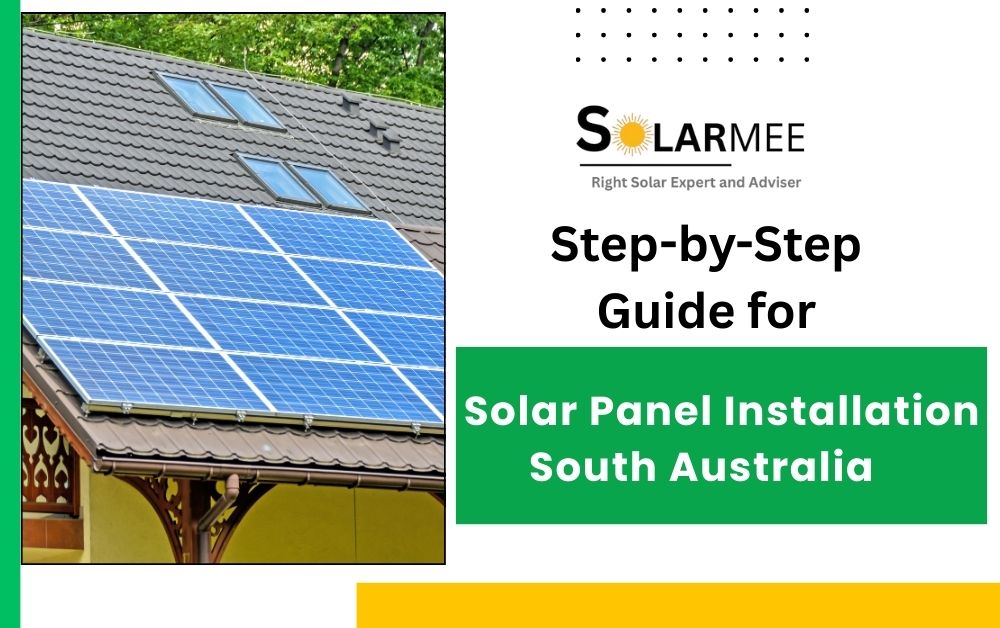South Australia is indeed at the forefront in using solar energy. At least half of the houses in the state have solar panels on the roof, and South Australia is now one of the best locations in the world to have solar panels installed in homes. Over the past years, the state has been growing stronger and stronger, to the extent that rooftop solar is generating more power than the state requires. It is the regular families and the businesses that have rushed to go solar in an attempt to reduce their power expenses and make their contribution to the planet.
The increase in demand to install solar panels in South Australia has plenty of reasons. It has been boosted by the strong government support, rebates, and the need to have cleaner and cheaper energy, which has seen more people jump on board. As the cost of electricity goes up and the weather becomes less and less predictable, it is not hard to understand why a significant portion of South Australians are shifting to solar in order to gain some control over their power.
The blog is just in case someone is considering joining. The following solar panel installation tutorial will be divided into steps that will be completed in easy words, some useful advice/tips will be given, and the items to be looked into in the process. You will find all the resources necessary to kick-start the process of installing solar panels in South Australia, whether it is your first solar panel upgrade or you just need a simple solar panel installation manual that you can actually use.
Why Solar Power is Booming in South Australia
Solar energy is soaring in South Australia, and there are several reasons as to why it is so trendy in the present times. To start with, the initial purchase of solar panels is significantly cheaper than it would otherwise be, due to government incentives and rebates.
The South Australian and the Australian federal government are both providing assistance such as the Small-scale Renewable Energy Scheme that provides you with an immediate discount and additional local rebates in case you live in other locations such as Adelaide.
An average household in South Australia can save an average of 1,300-2000 annually on the electric bills. If you have a battery, you can store the spare power to be used during nighttime or rainy days rather than purchasing expensive electricity from the grid. That is actual money that is in your pocket, and after several years, the majority of people discover that their panels have paid themselves back.
And there is the green aspect of it, South Australia receives plenty of sunshine, and it is the perfect place to generate clean and green energy. This assists in reducing the amount of carbon emissions and makes the surroundings healthier for all. Also, you have some power independence, which means that you are not feeling at the behest of electricity price increases or grid issues.
Should South Australia invest in solar panels? All of these financial incentives, large savings per year, and an eco-friendly effect make solar panels certainly worth it to the majority of South Australians nowadays.
Also Read: Step-by-Step Solar Panel Installation in the Australian Capital Territory (ACT)
Understanding Solar Panel Installation Basics
The installation of solar panels refers to the installation of solar panels and other related equipment on a property to absorb the sunlight and turn it into electricity. This includes the evaluation of the location, roof preparation, mounting, solar panel fixing, system wiring, and connection with an inverter and electric grid or battery storage. It aims at establishing an effective system that generates clean energy and can decrease the electricity bills as well.
Solar panel configurations are of two major categories: residential and commercial. Setups in homes are called residential and are normally smaller, whereas those serving businesses are called commercial and are larger and more complicated. The variations usually include the magnitude of installation as well as the parts of the system.
The state of the roof—the roof must be in good condition of the roof (the roof should face north in Australia to maximize the sunbeams), with shading (trees or buildings must not block the sunlight), and condition and strong. The efficiency of the system depends on the amount of sunshine the panels may absorb, which is affected by these variables.
Below is a simple analysis of business and residential solar panel installations-
| Aspect | Residential | Commercial |
| Size | Smaller systems (a few kW) | Larger systems (tens or hundreds of kW) |
| Location | Home rooftops | Bigger rooftops or open ground spaces |
| Complexity | Simpler installations | More complex, often with advanced setups |
| Purpose | Cuts down home electricity bills | Powers business operations and reduces expenses |
 Step-by-Step Solar Panel Installation Guide
Step-by-Step Solar Panel Installation Guide
Step 1: Site Assessment & Energy Audit
The initial one is to examine the roof to install solar panels. This entails making sure the roof has the right construction, is in good shape, and is not shaded by trees or other buildings around the Site, potentially reducing its efficiency in solar energy generation.
Calculate the amount of solar power needed after determining the energy use of your home now. This assists in the creation of a system that suits your power requirement and roof plan. Keywords: installation of solar panels and roof.
Step 2: Selecting the Appropriate Solar Panel.
Compare the three different primary types of solar panels: monocrystalline, polycrystalline, and thin-film.
Because of their high efficiency and durability, monocrystalline panels are generally the best choice for a sunny area like South Australia.
The efficiency of polycrystalline panels is lower by some margin, and their price is usually less. Thin-film panels are still flexible, however, less efficient and less prevalent. The correct decision will be based on a compromise between budget, space, and energy objectives.
Step 3: Designing the System & Getting Permits
After picking the panels, you probably have to sketch the whole setup. The size of the array might match the home’s energy use, and you’ll need an inverter. A battery backup could be added, but it isn’t forced. Then you should ask the local council for permission, so the job stays safe. Permits handle structural and electrical checks, and they let you link to the grid in your neighborhood. This measure will eliminate the problems during and after installation.
Step 4: Installing Mounts & Panels
The professional installers then install mounting brackets that are firmly attached to your roof, such that they withstand weather conditions. These mounts are then fitted with the solar panels, which are positioned with a north orientation, accessing as much sunlight as possible during the day in South Australia. Efficiency and the life of systems are enhanced through proper positioning. Keywords: roof and solar panel installation.
Step 5: Wiring & Inverter Connection
Once mounted, qualified electricians are used to do the electrical wiring according to the safety standards. These are connected to the inverter, which changes the DC (direct current) produced by the solar panel into AC (alternating current), which is the one used in the house. Effective power flow would be impossible without good wiring.
Step 6: Grid Connection and Testing.
Lastly, the system is also linked to the grid or battery storage unit if provided. Proper inspection is done to make sure that all is installed in a proper and safe way. After the approval, the system may start making clean power, so your electric bill’s likely to drop. Getting it set up usually needs one or two days of expert help and careful planning, to keep it safe, efficient, and meet South Australia rules. Therefore, proper guidance seems essential also for homeowners long term.
Costs of Solar Panel Installation in South Australia
Solar panel costs in South Australia seem to depend on system size, quality, and how tricky the install is. The price range for a 5-kilowatt system is between $4,500 and $6,000, while the cost of a 10-kilowatt array would be between $7,500 and $10,500. The numbers are essentially the total cost of the solar system, which includes the panels, the inverter, the mounting, and labor, after the rebates have been given. And comprise the panels, inverters, mounting hardware, and labor.
Therefore, the price varies, but basic components stay inside those limits. Some homeowners also consider future energy needs when choosing size. The ultimate price is influenced by a number of aspects. This matters a lot to the brand and quality of the solar panels; higher-end brands such as SunPower or LG will be more expensive but tend to perform better and have higher warranties.
The nature of the roof is also important; flat roofs are cheaper to set up, but complicated or steep roofs are costly to install. Experience and reputation of the installation company can also affect cost, as accredited installers are likely to charge a higher price based on the assured quality workmanship provided. There are also the local permits, electrical upgrades, and optional features such as monitoring systems, which are likely to increase the total.
When asking the question of how much it costs to install solar panels or how much solar panel installation costs, how much does solar power installation cost, or how much does it cost to install solar panels in South Australia, you are likely to spend anywhere in these ranges, but you will get a price that fits the specific needs and the roof characteristics. The right installer and good quality panels that are chosen may save money in the long run, as they would become efficient, and fewer repairs would be done.

Choosing the Best Solar Panels & Installers in South Australia
South Australia loves solar panels; thus, it is feasible to distinguish some brands that are of great performance, dependable, and pleasing to consumers when choosing them. Most people consider SunPower panels the most ideal choice since they have the greatest efficiency with above 22 percent and a maximum of 40-year warranties.
While they are more expensive, they would be perfect when quality and endurance come first. Another popular LG Solar has a great performance under low-light circumstances and a renowned brand image, in addition to being very effective. Many consumers find value in LG’s excellent warranty and solid construction, yet the prices are also high.
The panels, such as Jinko Solar and Canadian Solar, are good value; they cost less, and have reasonable efficiency and lifespan in case of budget constraints. Tiger Pro is a series of power supplies that has been glorified as having high power output and quality of construction, and is widely prevalent in South Australian homes.
Canadian Solar will provide reliable and lower-priced operation, but its efficiency rating is lower than that of premium brands. Trina Solar and Q Cells are the brands that offer good performance that fits the Australian weather and are moderately priced for those who want a compromise.
In the case of installers, the most important tip is to select an accredited installer of the Clean Energy Council (CEC). The certification guarantees their compliance with the Australian safety and quality standards.
Reviewed locally based installers are familiar with the unique conditions of South Australia, such as high solar radiation and local regulations that could be used to increase the performance of the system and rebates. To simplify the situation in the future, it is better to check customer comments and inquire about the warranties of the panels and the installation.
Concisely, optimal solar panels in South Australia are matters of priority and cost. It looks like Jinko and Canadian Solar are good value for money and can be relied upon, whereas SunPower and LG are more efficient and have a longer lifespan. Nevertheless, it is beneficial to pick a local installer who knows your area, as this will aid you in maintaining the system for a long time without any problems.
Maintenance, Insurance & Lifespan of Solar Panels
Solar panels out in South Australia last about twenty‑five to thirty years. Most home panels come with a twenty‑year warranty that promises at least eighty percent of the rated power. Yet they lose a bit of juice each year—maybe half a percent to one percent—so after several years, they work, not as strongly.
Maintenance, therefore, might help stretch their lifespan and keep efficiency higher. Some owners think regular cleaning is enough, while others add tech. In conclusion, panels keep chugging, a little slower. It should be cleaned every time to eliminate dust, dirt, leaves, and debris, as it may cause a blockage of sunlight, thereby lowering output.
Repairs can be identified in time by ensuring that every 1-2 years, the licensed electricians inspect their structures to identify damages such as cracks or loose wiring, which can be repaired before they impact the performance. If there is dirt buildup, shade caused by trees, and inverter malfunctions are common problems.
In the case of insurance, solar panels in South Australia are most likely to be covered by typical home insurance programs, although this can be dependent on the insurer. The policy specifications should be checked by the owners to make sure that the panels are covered, and special solar insurance can be used in case of damage due to storms or accidents.
To conclude, solar panels have a possible life of between 25 and 30 years when well-maintained. Frequent cleaning and professional inspection allow keeping the efficiency at its maximum level, and insurance is generally provided and needs to be verified with the provider to ensure that the investment is not wasted.
Also Read: Step-by-Step Guide for Solar Panel Installation in New South Wales
Conclusion
Solar panel installation on a house in South Australia requires a roof inspection as the initial step, followed by the work of drilling, cabling, and a quick test. Though hiring a licensed crew can cost more than a do-it-yourself hire, it could speed up permits. Panels can provide owners with some power independence, reduce coal smoke, and cut monthly bills. The state gives rebate checks, and the equipment lasts for many years, which might entail possible additional advantages; older roofs occasionally need repair first, thereby adding work.

“Hi, I’m Ishita ,a content writer who loves turning ideas into engaging stories. I specialize in writing blogs, articles, and website content that connects with readers. Over the past few years, I’ve worked with startups and companies to create clear, creative, and impactful content. When I’m not writing, you’ll usually find me reading or exploring new ideas for my research. This website is my space to share my work and connect with people who value quality writing.”


 Step-by-Step Solar Panel Installation Guide
Step-by-Step Solar Panel Installation Guide

